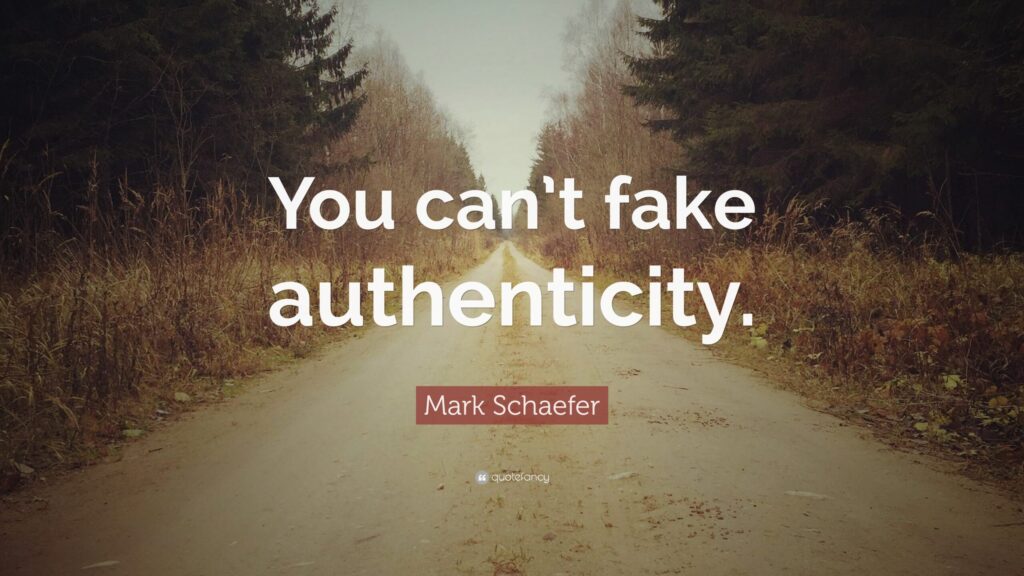Technique #7: Emotional Copywriting
Article #7 from the series, 10 Persuasive Copywriting Techniques
Topics Covered in This Article
Emotional Copywriting
So far in this series, we’ve talked about turning attention into interest, interest into desire, and desire into urgency. The final two techniques in this series will focus on turning urgency into action.
This article introduces the seventh persuasive copywriting technique, which is emotional copywriting. Emotional copywriting is the glue that holds all your copywriting together.
You can master all twelve copywriting techniques in this series, but it takes this one to make your writing come to life.
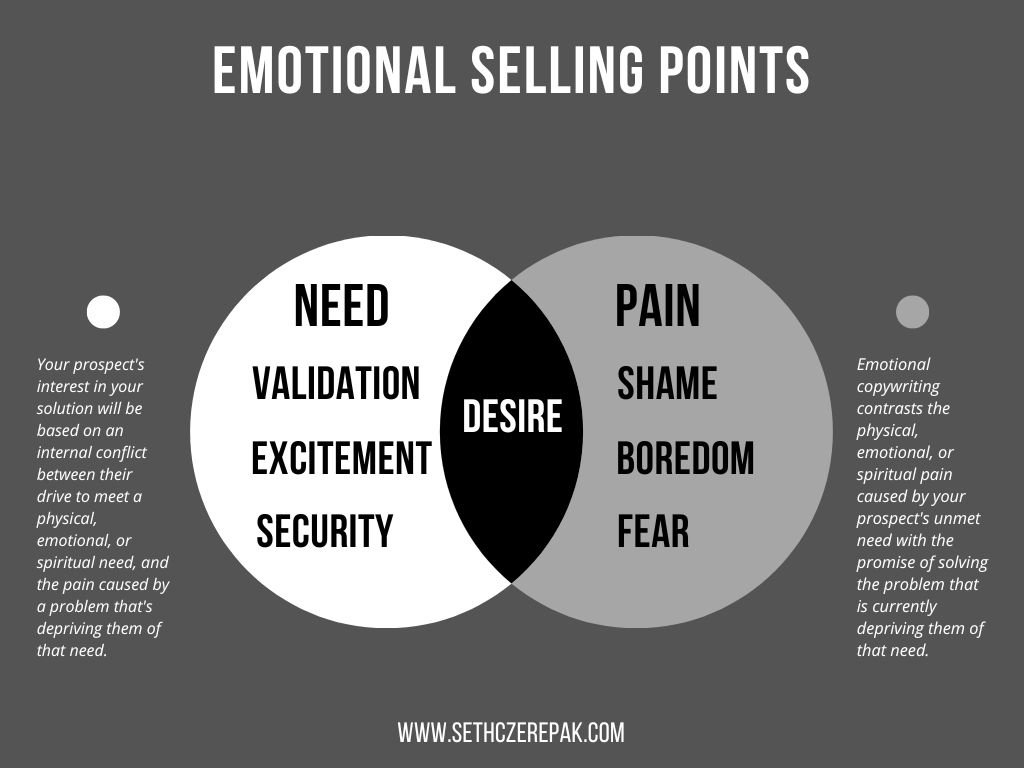
The Role of Emotional Copywriting
Emotional copywriting is based on two central rules. The first rule is that your prospect’s interest in your offer is usually based on an internal conflict between their drive to meet a need and the pain of not having that need met.
The second rule is that emotional copywriting contrasts the pain caused by your prospect’s unmet need with the promise of solving the problem that’s depriving them of that need.
If this sounds complicated, that’s because it is. The good news is that emotional copywriting becomes simple once you grasp these two rules. In my experience, writing coaches who try to simplify this topic provide little or no practical advice for writers who want to learn and master it.
Some writers naturally write emotionally compelling content, even if they can’t explain in detail how they do it. Other writers have to learn the skill intentionally. The good news is that if you learn it intentionally, you’ll understand what you’re doing and why. You’ll be able to call up this skill on command, instead of waiting for the fickle mistress of inspiration.
Emotional Copywriting is About Emotional Needs
Emotional copywriting is based on the idea that everyone has a few basic emotional needs:
Of course, everyone is a little different in how they relate to these needs. Some people need excitement more than security, others favor security, and there are multiple ways for us to seek validation.

This is why some people are comfortable taking risks while others prefer to protect the status quo. Likewise, some people find validation through accomplishment, while others find it through social approval. I explain these personality dynamics in detail in our article on How to Build a Content Marketing Team.
Of course, everyone is a little different in how they process these needs. Some people need excitement more than security. Others need security more than excitement. This is why some people are comfortable taking risks while others prefer to protect the status quo. Likewise, some people find validation through accomplishment, while others find it through social approval.
I explain these personality dynamics in detail in our article on How to Build a Content Marketing Team. For now, the important thing to understand is that these emotional needs are universal. Once you learn to recognize them, you’ll also realize that they’re self-evident in people’s behaviors. This is the foundation of the first rule of emotional copywriting.
Again, this rule is that your prospect’s interest in your offer is usually based on an internal conflict between their drive to meet a need and the pain of not having that need met. For example, a person who seeks validation through social approval may have a problem that makes them feel rejected, unloved, or unwanted by others. Likewise, a person who seeks validation through achievement may have a problem that makes them feel foolish, ineffective, or like a failure.
These are examples of the negative side of the need for validation, which, for the sake of this study, I will call shame. You can call it something else if you’d like. The labels don’t matter. What matters is that you understand the emotional need underlying your prospect’s problem.
Your prospect may have a problem that makes them feel bored, burned out, or unhappy. These are examples of the negative side of excitement which, for the sake of this study, I will call boredom. Finally, your prospect may have a problem that makes them feel anxious, fearful, frustrated, or threatened. These are examples of the negative side of security, which, for the sake of this study, I will call fear.
To summarize, the three basic emotional needs each have a polar opposite:
Again, change the labels if you want. As long as you grasp the underlying idea. Your prospect will most definitely call these emotions by other names, and may even deny them or rationalize them using more sophisticated language. What matters is that you learn to recognize three things during your Buyer Persona research:
Earlier in this series, I spoke about the second and third of these points ^ using the terms “Semantic Relevance,” and “Emotional Relevance.” In a moment, I’ll show you how the three emotional needs (and their negatives) fit into this picture and how you’ll use them when researching and crafting your messages. First, let’s get some context by looking at a few examples of emotional copywriting.
Examples of Emotional Copywriting
Emotional copywriting is all about understanding tension and release. This tension is created by your reader’s internal conflict between the emotional needs and the polar negatives mentioned in the previous section. Our job is to contrast the pain caused by your prospect’s unmet need with the promise of solving fulfilling that need. The following examples demonstrate this using each of the three emotional needs (validation, excitement, and security).
Emotional Copywriting: Example #1 (Validation)
Let’s assume our Buyer Persona is a business coach or consultant. They’re trying to write a book, but unsatisfied with how it’s coming out. They suspect that becoming an author is their ticket to attracting better clients and bigger opportunities. However, they’re starting to ask whether the effort will be worth it.
They’re now back on LinkedIn trying to build their reputation there. It’s a slow, tedious process, and they’re debating whether that’s worth the effort either. Then, they find a professional Ghostwriter and editor with a LinkedIn profile that reads like this (I’ve used [BRACKETS] to highlight the places where I used emotional copywriting):
You Know That Book You’re Writing?
I’ll [VALIDATION+SECURITY >]help you FINISH IT and FEEL GREAT about promoting yourself with it.[< VALIDATION+SECURITY]
Despite the rise of social media, the evidence tells us that writing a book is the best way to become a TRUSTED AUTHORITY to your audience.
According to a 2020 study of 2,560 web users, readers who discovered a new author’s work were most likely to do this next:
Wow! Imagine that. Readers who find your content online are first and foremost interested in whether you’ve written a book. [URGENCY >]They could be looking for your book right now.
What are they finding?[< URGENCY]
[VALIDATION >]Imagine being recognized as a KNOWLEDGEABLE and TRUSTWORTHY authority in your subject. Imagine your insights and advice being sought by other experts all over your industry and the world.[< VALIDATION] [SHAME vs VALIDATION >]Imagine becoming known as a one-of-a-kind authority instead of being commoditized as just another voice in the crowded online marketplace.[< SHAME vs VALIDATION]
[VALIDATION >]Your expertise matters. But do your readers know this? Do they see you as a one-of-a-kind authority? Do they take your advice to heart, and act on it? [< VALIDATION] [SHAME+FEAR >]Or do they think they’re better off with someone cheaper, or more likable? [< SHAME+FEAR] [VALIDATION >]As a Thought Leader, you could GET PAID MORE for your knowledge, and have the pleasure of working with clients you most enjoy working with.[< VALIDATION]
[SHAME vs VALIDATION >]Which would you rather do?[< SHAME vs VALIDATION]
The 2019 Edelman-LinkedIn B2B Thought Leadership Impact Study surveyed 1,200 US business decision-makers, content creators, and salespeople to see how they perceived the value of the companies or service providers they did business with. Here are three findings from the survey:
Just [VALIDATION >]imagine what this means for your professional reputation. Your ability to MAKE AND IMPACT depends on whether you become recognized as a one-of-a-kind expert.[< VALIDATION] A well-written book is one of the best ways to do this. LET’S WORK TOGETHER and [VALIDATION+SECURITY >] create a book that positions you as an AUTHOR and an AUTHORITY.[< VALIDATION+SECURITY]
(NOTE: The example above is relevant to Buyer’s Journey Stage #3)
There are literally DOZENS of super-valuable points I can make about this example. We’ll start with those most relevant to emotional copywriting. First, notice that I’ve focused primarily on contrasting validation with its opposite (shame). While I also leveraged the need for security, I focused mainly on validation. There’s a HUGE reason for this, which I bet you can guess if you’ve been reading this series in order. It’s the primary emotional need for this audience and for this offer.
I didn’t happen on this information overnight or by guesswork. It took a lot of research and one-on-one interaction with this audience to provide this exact service. There is no substitution or shortcut for this when it comes to digging out the emotional need behind your prospect’s problem. This is why I’ve been beating the drum on the Buyer Persona exercise mentioned in article one of this series and in my article on How to Create a Buyer Persona.
I’ve bracketed out the places where I used this knowledge about my reader’s emotional need for validation. Notice that I did four things in this example:
Notice how all the above points worked together to get them off the fence about whether they should invest in networking (which they’ve already tried) or hire me to help finish their book. This is especially important for readers who are in Stage #3 of the Buyer’s Journey. and who are not (yet) sold on the type of solution you offer.
If I had simply yammered on about what a great editor I was, the effect of this example would have been greatly diminished. You must sell your reader on your type of solution before you try to position your brand as the superior provider of that solution.
I’ve also applied Dog Whistle marketing in this example with the term “Thought Leader” and the statement “…better off with someone cheaper, or more likable.”
This, again, is a demonstration of a deep knowledge of this audience. The term “Thought Leader,” will mean nothing to some readers, and even sound gimmicky.
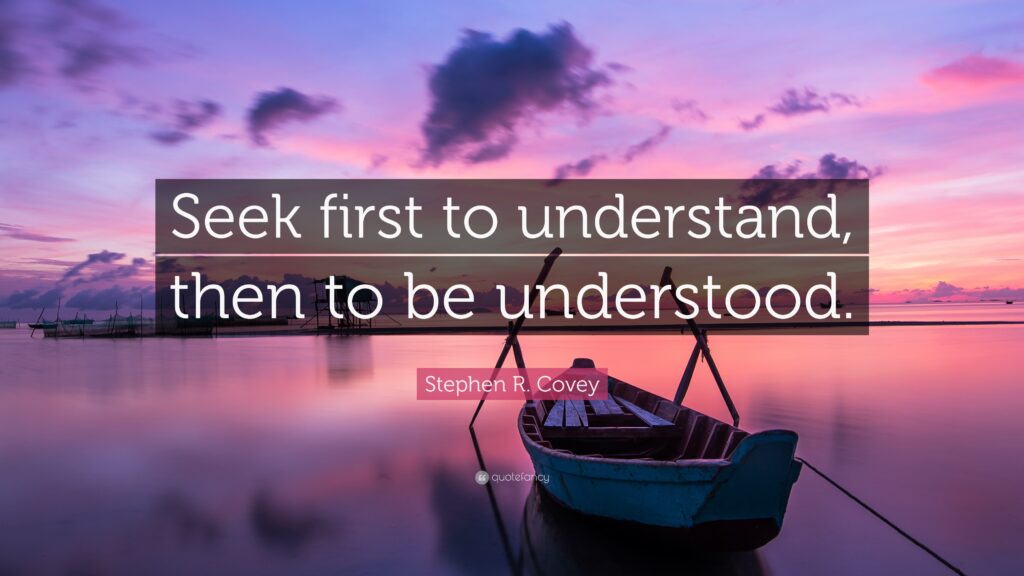
But for this audience, it’s a term loaded with semantic and emotional meaning. By using it, I’m important a truckload of hidden value that’s undetectable to readers who are not part of this audience. The statement “…better off with someone cheaper and more likable…” hits another HUGE emotional hot button for this audience.
Having consulted one-on-one with thousands of solo entrepreneurs, speakers, coaches, and consultants, I can tell you that they secretly resent seeing people in their industry thrive simply because they are likable or charismatic. They want to escape the commodity trap and enjoy working with clients who will value them for who they are, instead of evaluating them by price, or personality.
Again, this is why it’s super important to understand who you’re talking to, what matters to them, and (most importantly), the internal dialog and external experiences that give context to their desires. This is the foundation of all great copywriting. I’ll make two more points about this first emotional copywriting example before we move on.
First, you’ll notice that I did all of the above things without sounding awkward and weird about it. This is an important point if you happen to be an introvert who is often misunderstood. I’m one of those myself, and I can tell you that when I first started using this technique, it sounded damn clunky. Creepy even. It took conscious effort for me to make this sound natural. Even today, I sometimes run my writing by my wife, who is an extrovert and naturally great with people.
Maybe this will come naturally to you and you’ll hit the ground running. But, if you’re anything like me, it will take work and you’ll most certainly suck at it when you start. DO NOT give up! You will get there with practice.
Secondly, you might be reading my comments above and thinking:
“Is this ethical? I mean, I don’t want to shame anybody.”
This is a self-centered mindset. The shame is already there before they find your ad. The question is whether they’ll benefit from it by responding properly and getting your help by hiring you or buying your product.

True, their shame may also be rooted in some deeper psychological cause. Let that be what it is. You’re not a psychologist, and even they have a hard enough time unraveling people’s mental health challenges.
You are offering your reader a healthy way to meet their need by solving the problem at hand. If your product or service doesn’t actually do that, shame on you for misusing this information.
If it does, and you hold back for fear that you’re “shaming someone,” then shame on you for not doing your part to make their life better. Either way, any hesitation you have about using these techniques ethically is more about your own insecurity than it is about being nice to your client. Authentic courage is rooted in empathy. Tell your reader the truth and be confident that you’re doing them a service in doing so. My bet is, that they’ll thank you for your courage and your compassion (see what I did there?).
Emotional Copywriting: Example #2 (Excitement)
In this example, our Buyer Persona is a single man in his mid-40s to early 50s. He has always been ambitious and hard-working. But he’s also deeply interested in exploring the world and experiencing a spiritual awakening. He recently ended a long-term relationship, and his children are grown.
He has no geographical ties and very few financial obligations at this stage of his life. He’s about to leave the office after a long day at work when he finds a website with this message that starts like this (I’ve used [BRACKETS] to highlight the places where I used emotional copywriting):
Are You Missing The Adventure of Your Life?
You’ve always wanted to travel the world. [EXCITEMENT >]Live where you want. Work when you want. Explore distant lands. Feed your mind. Experience strange new cultures.[< EXCITEMENT]
[BOREDOM+SHAME >]Now, you’re watching the sunset every day outside your office window. Every adventure, every promise, every 3 am beer conversation with that old friend you see now and then on Facebook. There’s so much you wanted to do with this life.
Now, it’s been years since your 40th birthday, and you haven’t done any of it.[< BOREDOM+SHAME]
[EXCITEMENT >]What if you could?
What if you could finally walk amidst the ancient stone megaliths of Machu Picchu, explore the dark and musky chambers of the underground city of Derinkuyu, or feel your plane touchdown amongst the mist-wrapped peaks of the Himalayas as you prepared yourself for your pilgrimage amongst the rock-hewn Buddhist monasteries.
Your heart is just racing at the thought of it all.[< EXCITEMENT]
Now it’s time…
(NOTE: The example above is relevant to Buyer’s Journey Stage #1)
Again, this example is packed with multiple applications of the techniques from this series. The emotional copywriting components contrast the excitement with boredom and validation with shame. By now, it should be self-explanatory how this contrast ignites the reader’s internal desire to move away from boredom and toward the excitement promised by this message.
Later in this series, I’ll show you how this coupling of excitement vs boredom and validation vs shame work together to turn urgency into action and to reduce the toxic marketing side-effect of buyer’s remorse. For now, I’ll let the emotional contrast in this example speak for itself and make three more points.
Firstly, you might have noticed this (seemingly) peculiar reference to “..3 am beer conversation with that old friend you see now and then on Facebook.” You’ll also notice that I referenced specific travel destinations like Machu Picchu, Derinkuyu, and the Buddhist monasteries of the Himalayas. While these references might seem odd or irrelevant to some audiences they are both deeply meaningful for the audience I’m writing to in this example. They are examples of Dog Whistle marketing.
Being a part of this demographic myself (I’m writing this in 2022), I can tell you that men in this generation and age group are often nostalgic about the richness of our younger life relationships.
We remember the days before social media when friends would talk (sometimes until sunrise) about things that had much deeper intellectual and spiritual meaning than the conversations that dominate our later lives.

Over the years, many of us lost touch with relationships, but not with the memory of those conversations. Reconnecting with these people on social media is just not the same, and it often reminds us of something we lost touch with.
Again, this is something that might sound irrelevant or even cheesy to another audience, but that’s why we call it Dog Whistle Language. Your audience hears something completely different than everyone else does, and that’s how you make copywriting authentic and relevant. This also applies to the travel destinations I’ve chosen to cite in this example.
Again, some audiences won’t care about these destinations or even know where they are. But remember that our reader is someone who is deeply interested in exploring the world and experiencing a spiritual awakening. The odds of our reader knowing about these destinations and being interested in them are very, very high. By referencing them in our message, we add a rare and refreshing authenticity that magnifies our use of the emotional copywriting technique.
My only caution is that Dog Whilst Language is NOT something you want to guess about. If you get it wrong, your message will fall flat. You have to pay the price by clearly defining your Buyer Persona and using that to guide your research.
My second point is that this example leverages something that marketers and investors call “FOMO,” (an acronym for “Fear of Missing Out”). In my experience, FOMO is a huge, huge incentive for excitement-oriented people and for offers that appeal to the need for excitement and validation.
Read the headline of this example, and the paragraph that starts with this statement “…Now, you’re watching the sunset every day outside your office window.” Notice how I’m using the “FOMO Factor” to nudge up the volume on my emotional copywriting. We will revisit this topic in the final article of this series. My third and final point is that this example leverages a psychological theory called Erikson’s life stages.
Erikson’s theory states that people in this age group are in the seventh of the eight stages of Erik Erikson’s theory of psychosocial development (“Generation vs Stagnation”).
According to the theory, the term “generativity” refers to making your mark on the world by creating or nurturing things that will outlast you. In other words, it’s all about legacy at this stage of a person’s life.
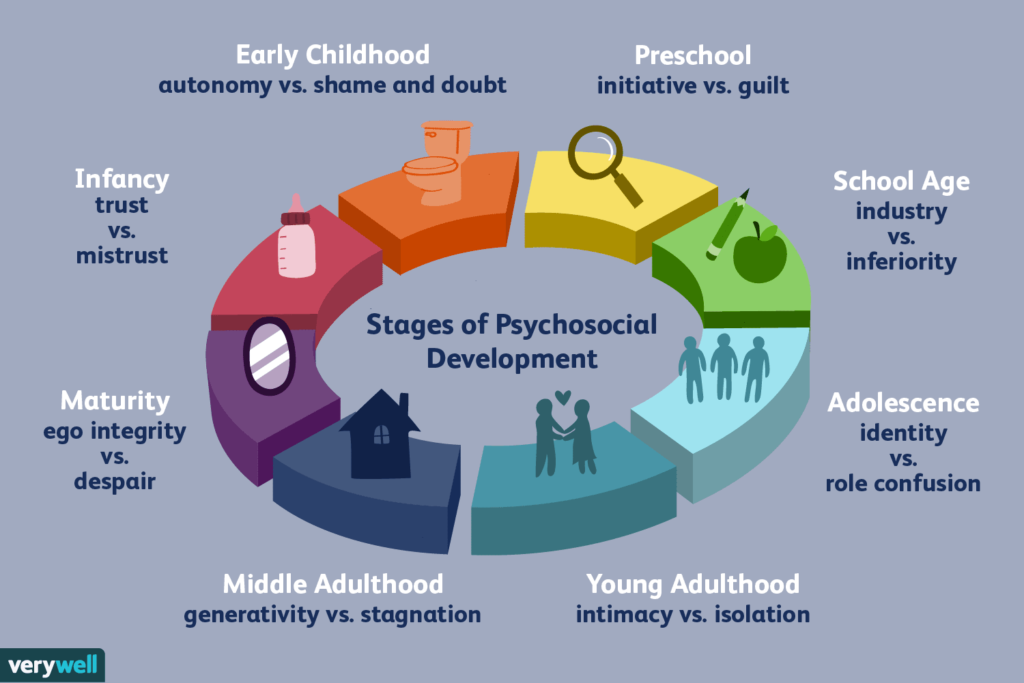
My own experience in counseling men of this age group tells me that this is a pretty reliable model, which is why I often use it to inform my Buyer Persona research. I have especially noticed that men in this age group are likely to become more introspective and adventurous (sometimes seen as reckless), while women are more likely to seek out more meaningful connections with others.
Now scroll back up and read this example again, keeping in mind what I just said about this target audience and their stage in Erikson’s model. Notice how I appealed to my reader’s desire for introspection and adventure and tied it to their needs for validation and excitement.
Again, this is only possible because I took my time to define a specific Buyer Persona and to use that person to do deeper and more targeted research. My only caveat on this point is that you should never give one model too much weight when doing your own research. Erikson’s life stage model is just one of many models I use to inform my research.
Test everything you find during your research against multiple models, and a clearer picture of your reader’s psychology will start to emerge. I’ll share some specific research methods after we look at our final example.
Emotional Copywriting: Example #3 (Security)
This final example combines the emotional contrast between security and fear with an appeal to disgust. I will explain the reason for this in my comments below. In this example, our Buyer Persona is a new mother whose baby has just started learning to crawl.
Lately, she’s been concerned about red spots showing up on her baby’s arms and feet. She’s researching the topic online when she finds a website with a message that starts like this (I’ve used [BRACKETS] to highlight the places where I used emotional copywriting):
Red spots on Your baby’s hands and feet? Brace Yourself…
See those red, itchy spots on your baby’s hands and feet?
Now look at your carpet. [FEAR >]You can’t see them, but they’re there…
[DISGUST >]Wriggling swarms of tiny tic-like carpet beetles. Eager to sink their nasty little pinchers[< DISGUST] into your baby’s tender hands, feet, and legs. Even a three-foot crawl across your “clean” carpet can put your baby’s hands and feet at risk.
Can you imagine what happens when they put those fingers in their mouth?[< FEAR]
But that’s not all…
Since 1948, dermatologists have reported on case histories of dermatitis caused by contact with carpet beetles. Victims suffered pruritic itching and papulovesicular eruptions. Some developed respiratory tract and eye irritation.
The cause?
[DISGUST >]The clinical research describes what appears to be an allergic reaction to carpet beetle larval hairs and hemolymph (insect blood).
How gross is that?[< DISGUST]
[FEAR vs SECURITY >]Of course, you can wait until your baby’s skin is desensitized through long-term exposure…or you can purge those nasty little creepers from your home for good.[< FEAR vs SECURITY]
[SECURITY >]And now you can do it safely and effectively, without exposing your little one to toxic chemical cocktails.[< SECURITY]
(NOTE: The example above is relevant to Buyer’s Journey Stage #1)
Notice how this example contrasts security with fear, just as we’ve seen with the emotions in the other two examples. But the real emotional magic in this example lies in the appeals to disgust. Three things make disgust a powerful tool for emotional copywriting.
Firstly, disgust can move your reader to rapid and decisive action faster than any other emotion. This is because disgust is biologically rooted in our motive to avoid disease. We don’t just move away from things that disgust us. We have a primal impulse to exterminate them completely, AND to purify (or even destroy) anything that came into contact with the object of our disgust.
Other manifestations of fear and anxiety don’t have the same effect. We only try to avoid things that we fear. But disgust awakens our primal impulse to “cleanse” our life of the object of our disgust.
Secondly, disgust is culturally linked to our concept of moral purity. Cognitive linguists call this relationship a “conceptual metaphor.” A conceptual metaphor is when we think or talk about an abstract concept in terms of something concrete and physical. For example, when we describe someone as “cold,” or “warm,” we’re linking the abstract concepts of friendliness and unfriendliness to the concrete concept of physical temperature.
What’s fascinating about this is that a conceptual metaphor can literally cause our physical experience of the concrete thing to activate an internal experience of the emotions and judgments associated with the abstract concept.
For example, multiple scientific experiments have found that the physical sensation of warmth or coldness can influence our interpersonal judgments.
These experiments found that everything from the temperature in a room, to the temperate of a drink and other objects in a person’s hand, can influence their judgments of people in their environment.
Similar experiments have found that people can be primed with physical sensations of movement (back or forward) to influence how they think and talk about the movement of time.
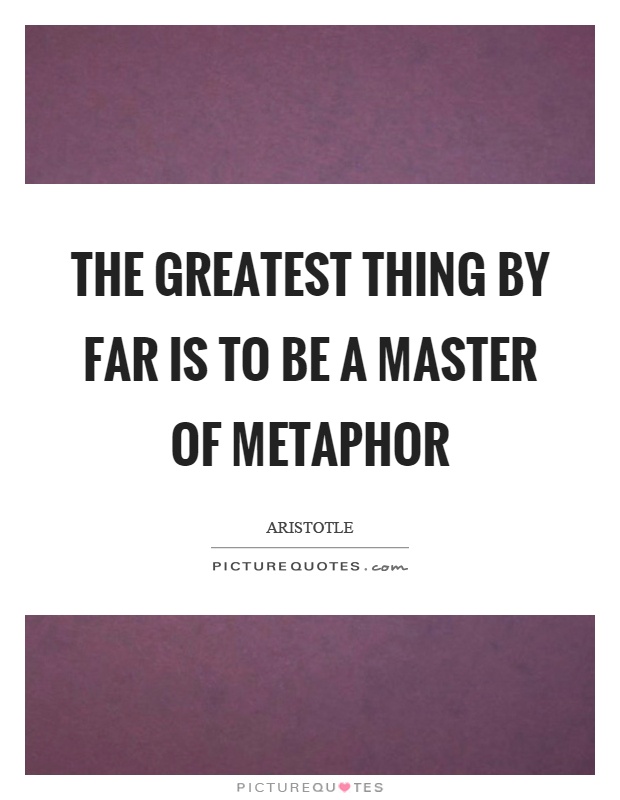
Again, this is because we use spatial terms like “back” or “forward” as conceptual metaphors to describe the abstract concept of time. In my philosophical work, I explain how people in some cultures have conceptual metaphors for time that are backward to ours in the west. For example, in the Hebrew language, the root word for future is built on the root word meaning “behind” and the word for past is built on the root word for “in front.”
I won’t go into detail here, but the impact of these cultural metaphors is astounding. You see their influence in the historical and philosophical texts of these cultures and even their attitudes and actions. By appealing to the concrete features of a conceptual metaphor (i.e., physical cleanliness), we indirectly invoke the emotions associated with the abstract conceptions linked to them (i.e., moral purity).
Cognitive linguists call this “semantic priming,” and it’s a powerful concept for emotional copywriting. In the above example, I leverage the concept of moral purity by creating an urgent desire for physical cleanliness. By appealing to disgust, we indirectly ignite our reader’s ethical motivation to purge her home of something she now perceives as physically repulsive.
My third and final point is that disgust is “stickier” than other manifestations of fear or anxiety. Humans have a remarkable ability to mask fear and anxiety through rationalization, denial, projection, and other psychological defense mechanisms. Disgust, however, is not so easy to dismiss. Once it takes root, it sits in our psyche like an egg-laying insect, poking, pinching, and gnawing away at our peace of mind with invisible teeth (see what I did there?).
Are you starting to see why disgust is such a powerful tool for emotional copywriting? Of course, this is also why you should use it wisely, so I’ll close this section with a few caveats. First, only use disgust if it authentically applies to the problem that your product or service solves.
Don’t use it simply because it’s a powerful tool for invoking action or because you think your reader should feel disgusted about something. Every emotional appeal must be relevant to your reader.
Second, never use disgust to attack a direct competitor. Such attacks against people who sell solutions similar to yours are more likely to backfire.
Always remember that the human brain learns by association. If you associate your competitor’s product or service with the emotions of disgust, that association could carry over when you talk about your own product or service.
Third, never make your reader feel disgusted about themselves, even if they already are. You might get them to buy, you will likely trigger buyer’s remorse, which means high refunds and lower chances for repeat and referral business.
Finally, don’t overdo it with your appeals to fear, shame, or disgust. There’s a fine line between authentic emotional copywriting and Rubber Chicken carnival barking. While the difference is obvious to your reader, it’s not always obvious when your head is buried in the work of writing copy.
In the tenth article of this series, I’ll introduce the technique of subtlety as a means of invoking disgust, excitement, fear, shame, and other powerful emotions without making your copy sound like an ad for snake oil. For now, let’s unpack some research techniques for uncovering your reader’s emotional hot buttons.
How to Apply Emotional Copywriting
The secret to applying emotional copywriting is to become an emotional detective using the insights covered in this article. To recap, emotional copywriting is all about contrasting three basic emotional needs with their polar (negative) opposites:
Call these emotions by other names if you must, as long as you grasp their underlying concepts. Your job is to train yourself to recognize three things during your Buyer Persona research:
When your prospect talks about their problem, they will almost certainly talk about its symptoms, not its cause. The odds are good that they either don’t know the cause or assume it to be something different than what it really is. Your job is to find out how they’re talking about, even if they’re “wrong.” This is the secret to writing with empathy and authenticity.
The most common mistake I see marketers make is talking about the problem from their (expert) perspective instead of talking about it from their reader’s perspective. This is, hands down, the #1 reason so many knowledgeable experts fall flat when they try to write their own copy.
I can’t overstate how common this is, or how easy it is to fall into this trap. The trick is to focus 100% of your research efforts on getting into the mind of your prospect.
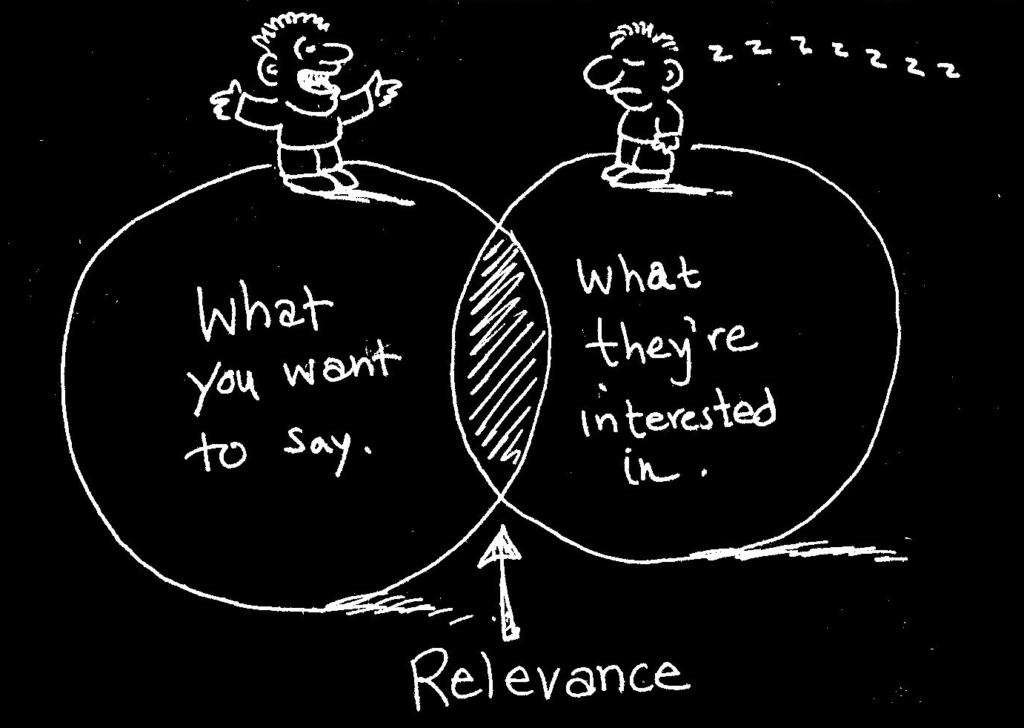
The internet has made this task easier than ever. If your product or service solves a real problem, you can bet there’s a place online where your target market is talking about it. Your first job is to find out where those places are and to see what people are saying. You can do this by typing queries into search engines using query formulas like these:
Query Formula #1
Query Formula #2
Query Formula #3
Query Formula #4
Query Formula #5
Query Formula #6
Query Formula #7
Notice that each of these search query formulas includes a command like “inurl:forum.” This command tells the search engine to look for content generated by users inside forums. You can also add the command “site:website” to the end of your query (example query: “what is the best nootropic” website:quora.com) to target places where end users are asking questions and discussing things relevant to your product or service, or to the problem it solves and the competing solutions for solving it.
I also suggest you look for reviews written by people who have used a product or service like yours. Pay close attention to their complaints. Look for the most commonly stated benefits people experienced using the product. Do enough of this and you will start to find common denominators, common words, and common phrases. These are all clues about how to talk to your readers at all five stages of the Buyer’s Journey and the Customer Journey and to apply Dog Whistle language in your copy.
I can’t overstate how important it is that you look for content generated by people in your target audience. We don’t want articles written by people who either didn’t do any buyer persona research, or who did their “research” by reading articles written by the first type of person. It doesn’t matter what bloggers or even other marketers are saying. We want to know what our audience is saying about things like:
We don’t want blogs, articles, or ads with out-of-touch assumptions or guesses about these things. We don’t want to hear what self-proclaimed “experts” are saying either (there are a lot of these on the internet, and most of them are just repeating things they read somewhere else). In my experience, the biggest problem with doing research online is that too many people are talking, and not enough people are listening to end-users.

Even the content ranking at the top of search engines, and on popular content sites like YouTube doesn’t tell us what end users are saying about a topic. That’s all I care about.
If I have a question that requires expert input, I ask my client or another expert, who I know to be an expert. But when it comes to authentically connecting with my readers, my goal is to study them, not other people’s opinions about them.
Most online content is created by writers researching other online content and rewriting it in their own words. This is how even good content gets watered down, spread to other “researchers” who water it down even more because they didn’t take the time to consult their audience and may not even be clear on who they are.
Content repurposing and dilution is a huge, huge problem on the internet. It’s an even bigger problem when you realize that most content creators are either too lazy, ignorant or not being paid well enough to even define their target market, let alone find out what matters to them. If you break this mold and take the time to define your buyer persona, and look for user-generated content, your emotional copywriting will be much more authentic and compelling.
Find out what your audience is saying, and ignore everyone else until you do. If you can’t find enough user-generated content, KEEP LOOKING. Find salespeople who talk to your audience in person-to-person settings (not online) every day, and ask to interview them. Go offline and attend a local meetup group with members of your target audience and take notes if you have to. Once you’ve gathered this user-generated content, take your time reading it, and use it to uncover:
If you can’t answer these questions even after doing your research, reading the content, and reflecting on these questions, you either missed the mark on your research, or you don’t know this topic well enough. Print out the articles in this series and read them again, and again, and again, until the ideas start to click.
If this sounds like a lot of work, that’s because it is. Doing this work will put you head and shoulders over the crowds of writers who either don’t understand how important this process is or who are too lazy to follow through. In my experience, the best way to rise above the crowd is to spend your time doing things that they don’t want to do. Do the work. It will be worth it.
Mastering Emotional Copywriting
There are two secrets to mastering emotional copywriting: emotional contrast and logical justification. This article has focused on emotional contrast. We’ll unpack logical justification in our eleventh technique in this series, which is logic in copywriting. We’ll also be revisiting this topic in the final article of this series, which focuses on turning urgency into action.
Until then, I’ll make one final point about the three emotions introduced in this article:
Each emotion (validation, excitement, and security) has its own set of advantages and disadvantages.
For example, excitement is good because people naturally move away from boredom and toward excitement. However, excitement is also fleeting. When I was managing sales steams in the corporate world, I learned that salespeople who rely too much on excitement have the highest cancellation, no-show, and chargeback rates. The same is true with copywriting messages that rely too much on hype.
The best messages combine all three emotions by using excitement to initiate action, the promise of comfort to keep them committed, and validation to give them ownership of their decision to buy.
Metaphorically speaking, validation puts them in the driver’s seat, security gets their foot off the brake, and excitement puts their foot on the gas. Fear is a low-value way to initiate action. Excitement is too fleeting to keep someone committed to their purchase, and buyers who don’t own their decisions don’t stay committed to them.

If you’ve ever sold a high-ticket service that depended on your client’s ongoing trust in our expertise, you know what I’m talking about. Clients who fully own their decision are all in, and they get the most value out of working with you because they trust your expertise.
Others remained half-heartedly committed, or uncooperative. They keep working with you, but they continue to waste your time and their money by failing to follow through and do the work required to benefit from your service. Eventually, these clients will quit, and they rarely generate referral business or positive endorsements.
Sometimes, this is due to poorly managed expectations on your part. Other times, the prospect was never fully sold on your services in the first place. But in my experience, it makes a huge difference when your marketing messages attract the right prospects and properly prepare them for a great experience working with you. I’ll explain how to achieve this using the remaining five techniques in this series.

